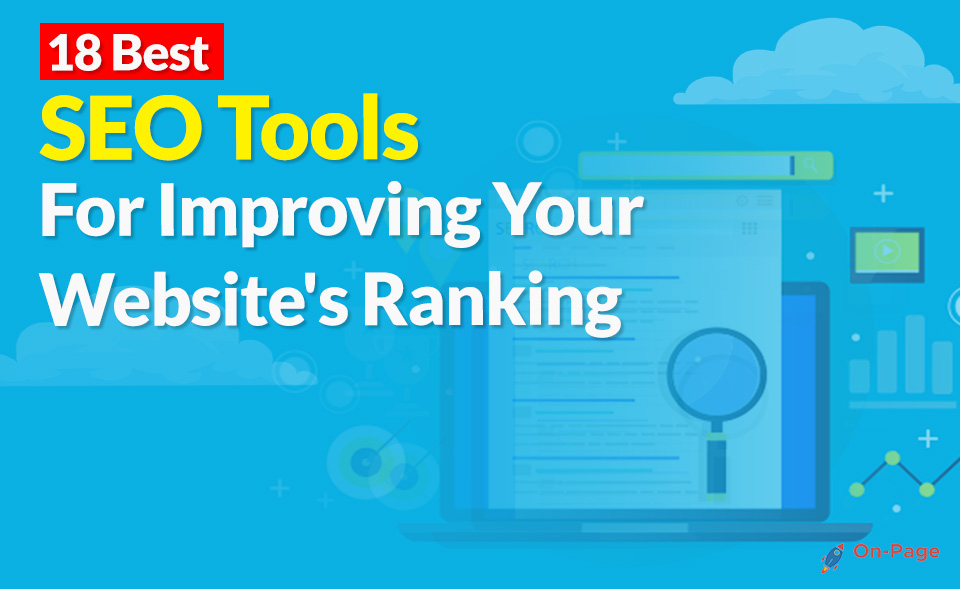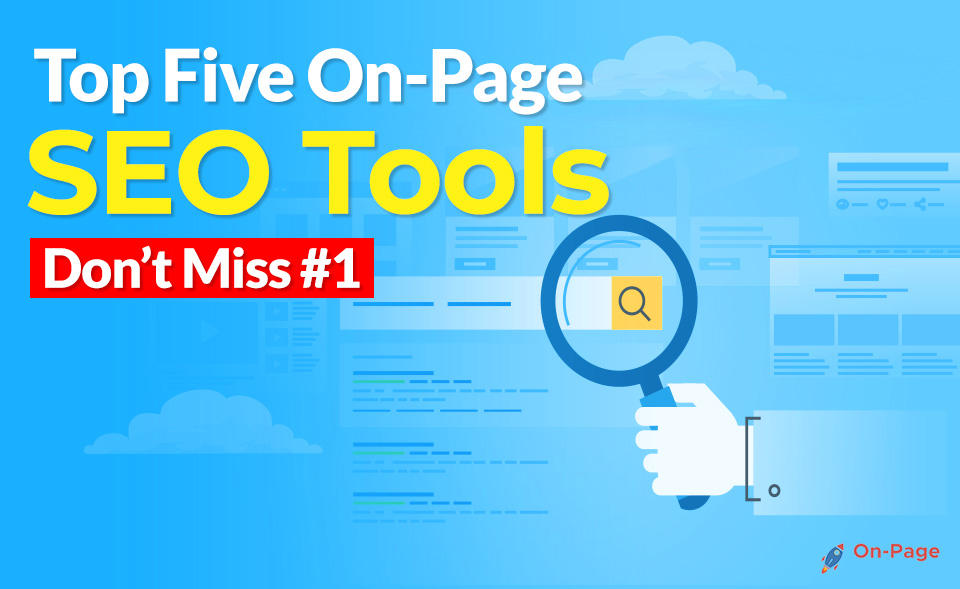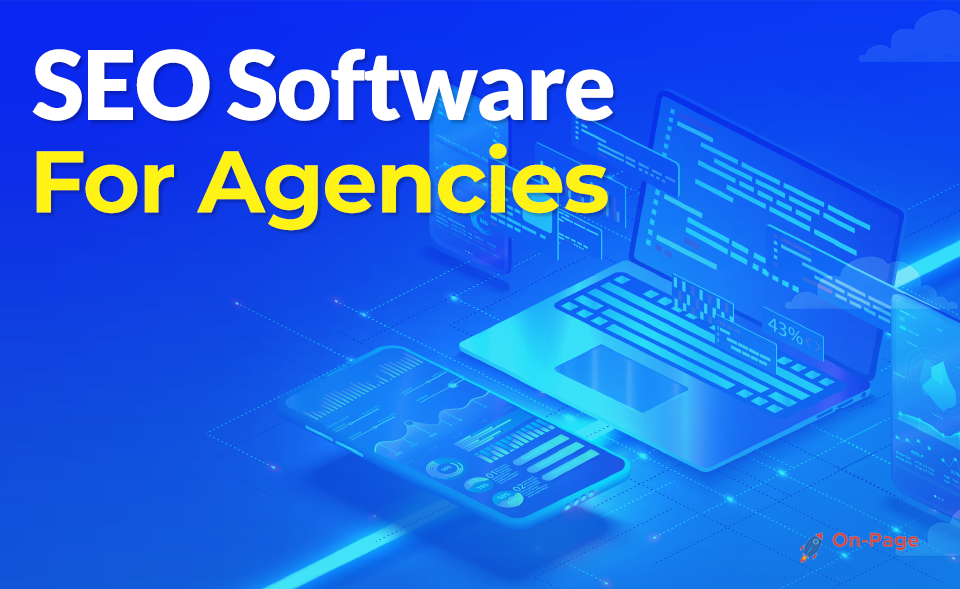SEO analysis tools light up your path, guiding your website to better performance in the web world. They serve as your compass, pointing out crucial areas such as keyword research, backlink analysis, and site audits. But not all tools are created equal. Each possesses its unique blend of features, ranging from free basics like Google Analytics to exclusive paid ones like Ahrefs, SEMrush, or the user-friendly On-Page.ai. Use only the sharpest tools in your shed.
You can use On-Page.ai’s SEO Analyzer tool to scan your website and receive detailed recommendations for improving SEO, such as optimizing meta tags, enhancing content relevance, and identifying technical issues. Simply enter your website URL into our SEO Analyzer tool to receive actionable insights on how to enhance your website’s visibility and ranking on search engines.
SEO Analysis Tools: A Selection Guide
When it comes to optimizing your website’s performance in search engine results, having the right SEO analysis tool at your disposal is paramount. These tools are designed to provide insights into how your website is performing, what keywords are driving traffic, and how you stack up against your competitors. From free options like Google Analytics and Google Search Console to more advanced paid tools such as Ahrefs, SEMrush, and On-Page.ai, the market is flooded with options to choose from.
An effective SEO analysis tool should offer a comprehensive suite of features. Here are some key features to consider when selecting an SEO tool:
- Keyword Research: The ability to identify high-performing keywords for your content strategy.
- Backlink Analysis: Understanding the quality and quantity of backlinks pointing to your website.
- Site Audits: Identifying technical issues that may be affecting your site’s performance in search results.
- Rank Tracking: Monitoring your website’s performance for specific keywords in search engine result pages.
- Competitor Analysis: Gaining insights into the strategies of your competitors and identifying opportunities for improvement.
However, selecting the right SEO analysis tool goes beyond just the included features. Factors such as user interface, accuracy of data, customer support, and pricing plans need to be carefully considered.
For instance, while a tool may offer a wide array of features, if its user interface is not intuitive and easy to navigate, it may lead to inefficiencies in utilizing the tool effectively. Similarly, the accuracy of data provided by the tool can significantly impact decision-making processes. Customer support can also play a crucial role in addressing any issues or queries that may arise during tool usage.
When evaluating SEO analysis tools, it’s essential to look beyond the surface and consider how each tool aligns with your specific needs and objectives. By carefully assessing the features, user experience, data accuracy, customer support, and pricing plans of each tool, you can make an informed decision that maximizes the potential for improving your website’s search engine performance.
In this fast-evolving digital landscape, understanding the nuances of on-page optimization becomes pivotal to consolidating your online presence. Let’s now turn our focus to one critical aspect—essential meta-tag optimization for page-level analysis.
Essential Meta-Tag Optimization for Page-Level Analysis
When it comes to search engine visibility, meta-tags are the unsung heroes. They serve as a beacon for search engines, guiding them through the content of your webpage. Optimizing these meta-tags can significantly impact your website’s rankings and click-through rates.
Firstly, let’s break down the key components of meta-tags. The page title is what appears as the clickable headline in search results. It needs to be captivating and contain relevant keywords to entice users to click on your link. The meta description provides a brief summary of the content, and again, needs to include crucial keywords while being compelling enough to attract clicks. Lastly, the meta keywords used to be important but have now largely fallen out of use due to spamming issues and are no longer recognized by major search engines.
Optimizing these meta-tags requires a strategic approach. Targeted keywords should be incorporated naturally, without keyword stuffing, to ensure they accurately represent the content. The character limits recommended by search engines also need to be adhered to:
| Meta-Tag | Recommended Character Limit |
|---|---|
| Title Tag | 50-60 characters |
| Meta Description | 150-160 characters |
But optimizing meta-tags doesn’t stop at sticking within character limits; it also involves crafting engaging titles and descriptions that prompt users to click through to your website. Utilizing action words or posing questions can pique interest, leading to higher click-through rates.
It’s crucial to keep up-to-date with the most effective strategies when it comes to meta-tag optimization. A/B testing can provide valuable insights into what works best for your specific audience.
For instance, a software company might find that including the word “free trial” in their meta-description significantly improves click-through rates compared to a generic description.
Think of meta-tag optimization like renovating a storefront. A catchy sign (the title tag) and a compelling offer (the meta description) can attract more people into the store (your website), ultimately leading to better business.
In essence, meta-tag optimization isn’t just about ticking boxes. It’s about creating an enticing doorway for potential visitors into your website, while also providing valuable signals to search engines about your content’s relevance and quality.
As we journey deeper into enhancing our website’s visibility and performance, let’s now turn our attention to unraveling the crucial connection between content and keyword density.
Key Significance of Content and Keyword Density
When optimizing your website for search engines, content and keyword density play crucial roles. Let’s start by understanding what exactly content and keyword density are and why they matter in the world of SEO.
Content encompasses everything from text, images, videos, and more. Search engines prioritize high-quality, relevant content over keyword stuffing. This means that your content should be valuable, informative, and engaging for the reader. Content length also plays a significant role in SEO, with longer, comprehensive content often ranking higher in search results.
For instance, a well-written 2000-word article on a specific topic may provide more value to readers than a short 500-word piece. Search engines may lean towards ranking the longer article due to its comprehensive nature.
On the other hand, keyword density refers to the number of times a particular keyword or phrase appears within the content in proportion to the total word count. The ideal keyword density for a webpage is generally considered to be around 1-2%. This means that for every 100 words, the target keyword should appear 1-2 times.
SEO analysis tools such as On-Page.ai provide insights into keyword density and offer recommendations to ensure that the content is well-optimized for search engines without resorting to keyword stuffing. By maintaining an optimal keyword density, websites can improve their chances of ranking higher in search results while providing valuable and relevant content to their audience.
Think of keyword density as seasoning in a dish – just the right amount can enhance the flavor and make it enjoyable, but too much can ruin the entire experience. Similarly, an optimal keyword density enhances the visibility of your content without overwhelming it with keywords.
Now that we’ve covered the fundamental aspects of content and keyword density in SEO, let’s explore how these elements can be effectively analyzed and optimized using advanced tools and techniques.
The Art of Link Analysis in Off-Page SEO
Link analysis is like examining all the roads that lead to your website. The more well-kept, high-quality roads leading to your site, the better your site will look to search engines. But it’s not just about quantity; the quality of those roads matters too.
When you want to find a good place to eat, you ask people you trust, right? In a similar way, search engines see backlinks as recommendations. If a trusted and popular website links to yours, it’s like giving you a pat on the back or a thumbs up. This boosts your reputation and shows search engines that you’re worth sending traffic to.
So what makes for a good backlink?
-
Anchor Text: This is the clickable text in a hyperlink. It’s important because it tells search engines what your website is about. If many reputable sites link to yours using a certain word or phrase, it tells search engines that this word or phrase is related to your site.
-
Domain Authority: This measures the strength of an entire domain or subdomain. If reputable websites with high domain authority link to yours, they can lift you up in search engine results.
-
Referring Domains: Think of these as different neighborhoods recommending a new restaurant. The more diverse the neighborhoods, the better!
Here’s an example: If you run a car repair shop and lots of car-related websites link to yours, it tells search engines that your site is trustworthy. But if fashion or food websites link to you instead, search engines might get confused about what your site is really about.
Now comes the real challenge—how do we make sure our backlinks are helping and not hurting us? This is where tools like On-Page.ai’s Link Relevancy Tool come in handy.
Using advanced algorithms and data analysis, this tool can help you understand how relevant and beneficial each backlink is. It assesses the quality and relevance of backlinks pointing to your website — incredibly valuable info for boosting your search visibility.
By leveraging these insights, you can identify opportunities for link building while also disavowing toxic or irrelevant backlinks that might harm your website’s reputation.
In the complex web of off-page SEO optimization, mastering link analysis is essential for building a strong foundation that elevates your website’s visibility and credibility within search engine rankings.
Navigating through the intricacies of off-page SEO optimization requires a keen understanding of not just link analysis but also other crucial aspects that shape the digital landscape. Let’s demystify the secrets of traffic, rankings, and competitor sites in our next quest.
Uncovering Secrets of Traffic, Rankings and Competitor Sites
When you think of your website as a physical store, SEO analysis tools become your secret shopper and spy kit wrapped in one neat package. They provide invaluable insights that reveal what brings customers to your site, where they come from, how they behave once there, and how your competitors are winning the game.
Traffic is the lifeblood of any website, and knowing where it comes from can help tailor your content to the right audience. The data provided by tools like On-Page.ai allows website owners to understand not only how much traffic comes to their site, but also where it originates from—be it organic search results, social media shares, or referrals from other websites.
Expanding on this idea, understanding keyword rankings helps optimize your content and improve visibility. It’s like having a map that shows you the best routes to take—only instead of roads and highways, this map shows you the keywords that can lead people straight to your digital doorstep. This valuable insight that SEO tools offer can help identify high-performing keywords that bring in traffic and guide your content creation strategy.
Furthermore, benchmarking your performance against competitors is an invaluable practice. By comparing your website’s performance metrics with those of competitors, you can gain a deeper understanding of your market positioning and identify areas for improvement. Leveraging this information enables you to develop strategies that allow you to outperform competitors in search engine rankings and attract more traffic.
For instance, if a competitor consistently ranks higher for a specific set of keywords, you can study their approach and learn beneficial tactics that could enhance your own keyword optimization strategy. Additionally, understanding the keywords that drive traffic to competitors’ sites can provide insights into market trends and customer preferences.
It’s akin to observing rival shop windows in a busy marketplace to understand which products are catching customers’ eyes. Understanding these market dynamics provides an opportunity to adapt your strategy to capture attention.
Armed with these powerful insights, let’s explore how these findings can be turned into actionable strategies for optimizing websites and outmaneuvering competitors in the digital landscape.
Importance of Full Website Audit Reports in SEO
A full website audit is akin to a thorough check-up for your website. It scrutinizes everything from the structure of your site to how quickly each page loads on different devices. Rather than just scratching the surface, it delves deep into the technical aspects that influence your website’s search engine performance. This encompasses internal linking, mobile-friendliness, and strategies related to overall user experience. Essentially, it’s an essential tool for ensuring that your website meets all the necessary criteria for optimal visibility in search results.
SEO Analysis Tools and Comprehensive Reports
SEO analysis tools such as On-Page.ai provide comprehensive website audit reports that furnish a detailed breakdown of various SEO factors. These reports serve as a roadmap for webmasters to identify and address underlying issues while also highlighting areas that need improvement. For instance, they may pinpoint pages with slow loading speeds or highlight elements causing a negative user experience on mobile devices.
Empowering Changes Based on Audit Insights
The audit report may reveal that the site structure leads to difficulties for search engine crawlers to index the pages effectively. This insight empowers webmasters to reorganize the site structure and improve internal linking, thereby enhancing the site’s crawlability and indexation process.
Furthermore, the actionable insights offered by these audit reports are invaluable in the world of SEO. They guide website owners in optimizing their websites effectively by prioritizing key areas for improvement. By addressing these issues, they not only optimize their sites for search engines but also improve the overall user experience.
In essence, in-depth website audit reports are indispensable tools that lay out a clear roadmap for improving a website’s SEO performance and addressing any existing issues that could hinder its visibility in search engine results.
Check out On-Page.ai to leverage powerful SEO analysis tools and optimize your website for greater visibility and user experience.





